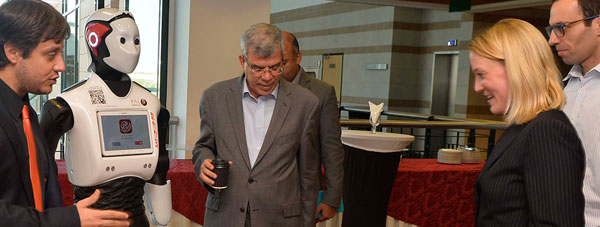ABOUT CONFERENCE
United Arab Emirates University (UAEU) and New York University Abu Dhabi (NYUAD) have joined forces in organizing the “4th Joint UAE Symposium on Social Robotics” (JSSR2019) as part of “Innovation Month 2019”. This event features a multidisciplinary program that brings together renowned developers, roboticists, and social scientists from across the globe to discuss the state of the art in social robotics. Join the multi-site event, be part of the group of experts, share your research, check out new robot technology, and discuss the latest innovations in the field.































